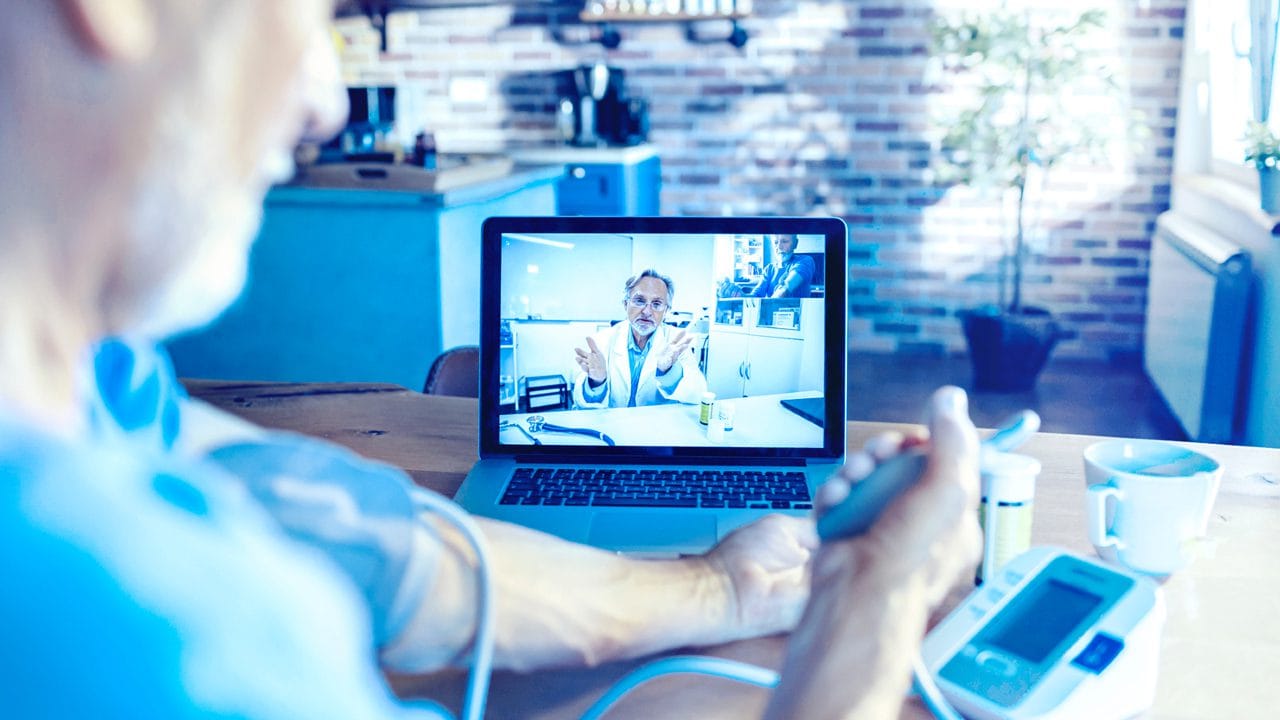Telemedicine industry has had a notable metamorphosis in the past few years, driven by worldwide trends toward digital healthcare solutions and technological breakthroughs. We must keep up with the most recent developments influencing the this industry as we move forward. In this article, we’ll look at some of the major uses of telemedicine in healthcare that are spurring innovation in the telemedicine sector.
Virtual Health Platforms and Ecosystems
One of the most significant trends in telemedicine is the rise of comprehensive virtual health platforms and ecosystems. These platforms go beyond simple video consultations, offering a wide range of integrated services. Patients can access health records, schedule appointment, receive prescriptions, and even remotely monitor chronic conditions. These ecosystems aim to provide a seamless and holistic healthcare experience, ensuring that patients receive continuous care without needing physical visits.
Artificial Intelligence (AI) in Telemedicine
The integration of artificial intelligence has been a game-changer in telemedicine. AI algorithms can analyze vast amounts of medical data quickly, assisting healthcare providers in making more accurate diagnoses and treatment plans. Machine learning models are also being used to predict disease outcomes, personalize treatment approaches, and enhance patient engagement. As AI continues to evolve, we can expect even more sophisticated applications in telemedicine, improving efficiency and outcomes.
Remote Patient Monitoring (RPM)
Remote patient monitoring has become increasingly prevalent, especially for managing chronic conditions. Wearable devices and sensors allow specialist to remotely track vital care, medication adherence, and other relevant data in real-time. This not only enables early detection of potential issues but also empowers patients to actively participate in their care. RPM is particularly valuable for older adults and individuals with chronic diseases, offering a proactive approach to healthcare management.
Telepsychiatry and Mental Health Support
The demand for mental health services has surged, and telemedicine has played a crucial role in addressing this need. Telepsychiatry services provide a convenient and accessible way for individuals to access mental health support from the comfort of their homes. Video consultations, therapy sessions, and digital mental health apps are helping break down barriers to mental healthcare, reducing the stigma associated with seeking help, and ensuring timely interventions for those in need.
Blockchain for Secure Health Data Exchange
As the importance of secure health data exchange becomes paramount, blockchain technology is gaining traction in the telemedicine industry. Blockchain ensures the integrity and security of health data, allowing for transparent and tamper-proof storage. This technology enhances data interoperability, streamlines information sharing between healthcare providers, and gives patients greater control over their health data. As privacy concerns continue to grow, blockchain solutions offer a promising avenue for maintaining the confidentiality and integrity of medical information.
Telemedicine Regulations and Policy Changes
The future of telemedicine in healthcare is evolving to accommodate the rapid growth of digital healthcare services. Governments and healthcare organizations are revisiting policies to ensure that telemedicine analysis is integrated seamlessly into existing healthcare frameworks. This includes reimbursement policies, licensure requirements, and the expansion of telehealth services across state and international borders. Stay updated on these regulatory changes to understand the evolving landscape and leverage new opportunities in telemedicine.
5G Technology for Enhanced Connectivity
The deployment of 5G technology is revolutionizing telemedicine by providing faster and more reliable connectivity. This is particularly crucial for real-time video consultations, remote monitoring, and data-intensive applications. With 5G, healthcare providers can deliver high-quality telemedicine services even in remote areas, ensuring that patients in underserved communities have access to the same level of care as those in urban centers.
Final Thoughts!
The telemedicine industry is leading the charge to modernize healthcare delivery by increasing accessibility, efficiency, and patient-centeredness is the telemedicine industry. The newest developments in telemedicine, such as the integration of blockchain technology and virtual health platforms, are influencing a future in which access to healthcare will not be limited to conventional settings. It’s critical that patients, legislators, and medical professionals all keep up to date on these developments and actively contribute to the advancement of telemedicine. By doing this, urgent care create a healthcare environment that is inclusive, attentive to the varied needs of people worldwide, and technologically advanced.
Also Read: Virtual Care And Telemedicine: A Post-Covid Fact?







